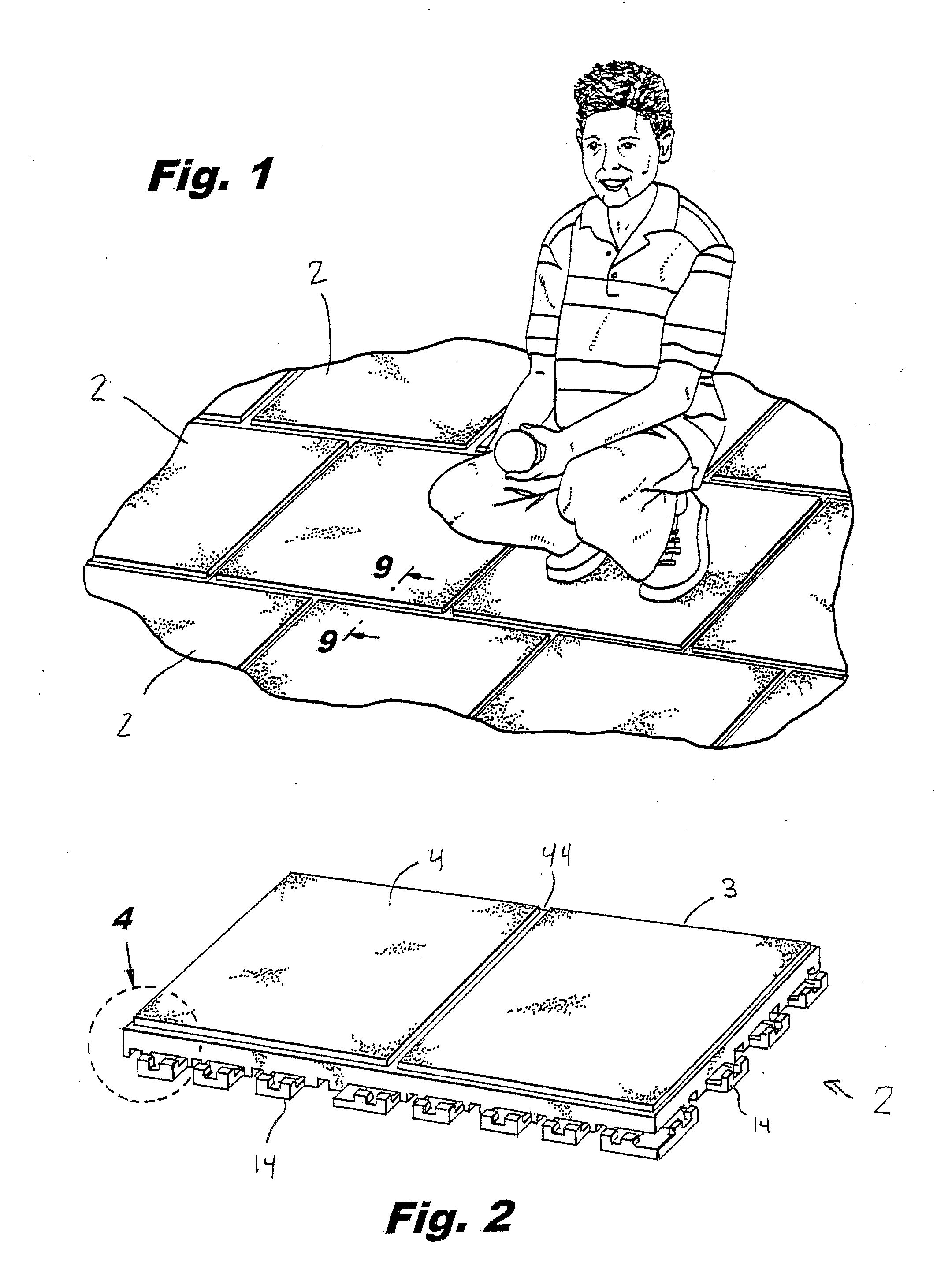Interlocking Rubber Tiles For Playgrounds
a rubber tile and playground technology, applied in the field of protective padding, can solve the problems of long-term disability, affecting the overall effectiveness of protective padding, and the ground material can prove to be very unforgiving, so as to reduce the separation, curling and peeling of the edges.
- Summary
- Abstract
- Description
- Claims
- Application Information
AI Technical Summary
Benefits of technology
Problems solved by technology
Method used
Image
Examples
first embodiment
[0046]Referring to FIGS. 1-9 of the drawings, it will be seen that a rubber tile protective system constructed in accordance with the present invention includes a plurality of rubber tiles 2, each rubber tile 2 being interconnectable to another by a series of interlocking mechanisms integrated along the peripheral edges of each tile. The rubber tiles 2 may be selectively coupled by the interlocking mechanisms to one another to form a customizable protective surface of various proportion and size, depending on the specific application and area to be protected.
[0047]Each tile 2 may be formed in a plurality of shapes and sizes, but preferably is rectangular. The tile 2 includes a main body 3 residing generally in a plane and having a top surface 4 having a high coefficient of friction for providing sufficient traction to children and other users. The main body 3 of the tile 2 also includes an oppositely disposed bottom surface 6, the bottom surface 6 being laid on and resting on the gr...
second embodiment
[0056]However, in this second embodiment, the tile 2 includes one or more slots 17 (that is, elongated recesses or openings) formed in at least one lateral side thereof, and one or more elongated projections 15 formed on at least another lateral side of the tile 2 which is preferably situated opposite the side having the slot or slots 17 formed therein. In a preferred form, the tile 2 includes a plurality of slots 17 spaced apart from each other, each slot being positioned on a side of the tile between adjacent male connectors 14, as shown in FIG. 12 of the drawings. Alternatively, one or more elongated projections 15 may be situated on this side between the male connectors 14 instead of the slots 17.
[0057]Correspondingly, in this preferred form, the tile 2 includes a plurality of elongated projections 15 spaced apart from each other, each projection being positioned on a side of the tile that is preferably opposite the side having the slots 17, as shown in FIG. 13 of the drawings. ...
PUM
| Property | Measurement | Unit |
|---|---|---|
| area | aaaaa | aaaaa |
| size | aaaaa | aaaaa |
| composition | aaaaa | aaaaa |
Abstract
Description
Claims
Application Information
 Login to View More
Login to View More - R&D
- Intellectual Property
- Life Sciences
- Materials
- Tech Scout
- Unparalleled Data Quality
- Higher Quality Content
- 60% Fewer Hallucinations
Browse by: Latest US Patents, China's latest patents, Technical Efficacy Thesaurus, Application Domain, Technology Topic, Popular Technical Reports.
© 2025 PatSnap. All rights reserved.Legal|Privacy policy|Modern Slavery Act Transparency Statement|Sitemap|About US| Contact US: help@patsnap.com



